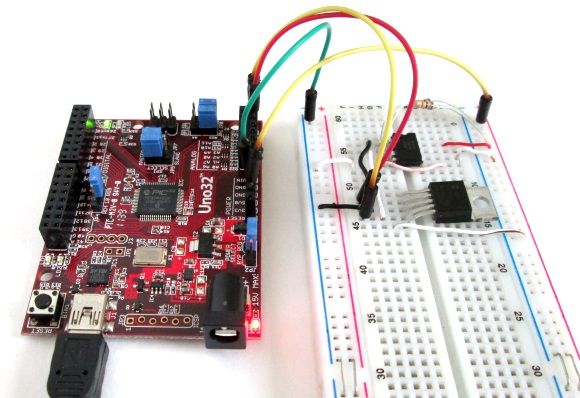TheoryAn I2C bus consists of two signal lines called SDA (data) and SCL (clock). Just line Arduino Uno, the chipKIT Uno32 board offers the SDA and SCL connections via analogue input pins A4 and A5 respectively. Each device connected to the I2C bus is software addressable by an unique 7-bit address. Multiple I2C devices can be connected to the same I2C bus as long as they have different addresses. A simple Master and Slave relationship exist at all times between the communicating devices. The Master device initiates a data transfer, generates clock signals and terminates the transfer. Any device addressed by the Master at any time is considered a slave.
Both SDA and SCL are open-drain lines, and therefore, require two pull-up resistors during operation. A more detail look of the I2C Bus protocol and how the exchange of information takes place between Master and Slave has been discussed in one of my previous tutorials, Inter-Integrated Communication in PIC MCU. So I am not going to repeat that here again.

